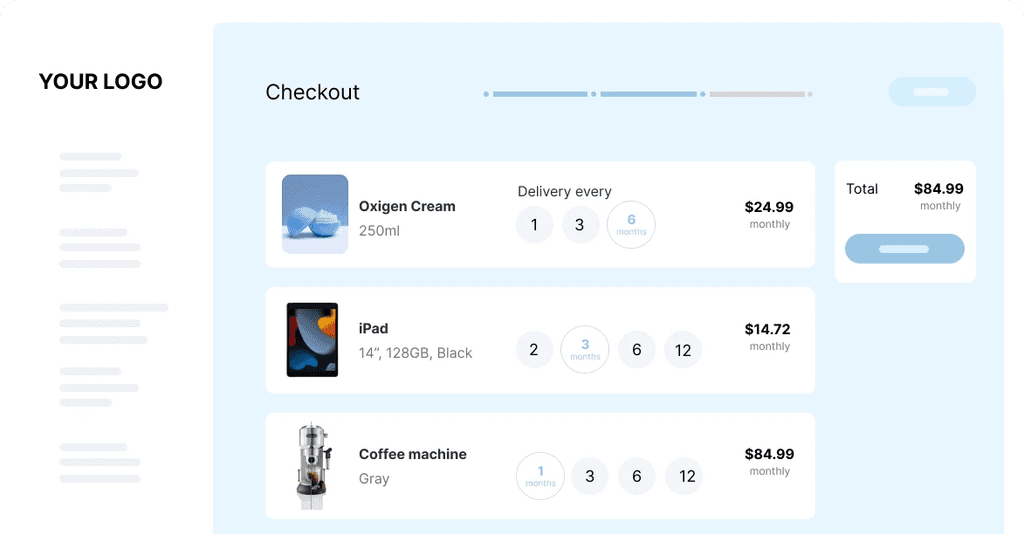Retail Customer Journey Mapping: Proven Strategies
Patricia Bernal

Feb 26, 2025
Understanding Modern Journey Mapping Success

Retail success depends on deeply understanding the customer journey - not just what people buy, but their entire experience from start to finish. A well-crafted journey map helps businesses spot opportunities, fix problems, and build stronger connections with customers.
Key Elements of Modern Journey Mapping
The most effective journey maps put customers at the center. Rather than focusing solely on products, they examine the full customer experience through their eyes. Data and analytics play a crucial role too - by studying customer behavior patterns, retailers can spot trends and preferences that guide their strategy.
Consider this common scenario: A retailer notices many online shoppers abandon their carts during checkout. Armed with this insight, they can focus on improving that specific pain point, perhaps by adding more payment options or simplifying the process. These data-driven improvements lead to better experiences that keep customers coming back.
A thorough journey map shows retailers exactly where customers get stuck or frustrated. For example, if the map reveals checkout friction, retailers can streamline those steps to be faster and more user-friendly. This targeted approach boosts both satisfaction and loyalty. Most importantly, journey mapping ensures a consistent experience whether customers shop online, in-store, or through mobile apps. Want to dive deeper? Learn more about Retail Customer Journey Mapping.
Building a Successful Journey Map
Creating an effective journey map starts with clearly defining your focus. Which customer segments matter most? What specific problems do you want to solve? Next comes identifying key touchpoints - every interaction between customers and your brand, from browsing your website to talking with support staff.
But touchpoints only tell part of the story. Understanding customer emotions and motivations at each step reveals deeper insights. Are they feeling confident or confused? What drives their decisions? This knowledge helps create experiences that truly connect. Don't forget to consider how customers move between channels like your website, physical store, and mobile app. A great journey map ties all these pieces together, giving you a complete view of how customers experience your brand.
Crafting Customer Journey Stages That Convert
A deep understanding of retail customer journey mapping requires carefully examining each stage to build strategies that drive real results. Smart retailers know that customers don't follow a straight line from discovery to purchase - instead, they move dynamically between different touchpoints as they engage with brands over time.
Defining Key Stages for Retail Success
Creating an effective customer journey map means breaking down each part of the customer experience systematically. The core stages typically include awareness, consideration, purchase, retention, and loyalty. Think of these stages like building a house - awareness lays the foundation, consideration frames the structure, purchase puts on the roof, while retention and loyalty create the lived-in feeling that makes it a home.
For example, picture someone first discovering a new clothing collection through an Instagram ad (awareness). Their interest piques and they enter consideration, checking the retailer's website, reading customer reviews, and comparing prices. If they like what they see, they move to purchase, adding items to cart and checking out. But the journey continues - retention focuses on bringing them back through targeted emails and rewards programs. The ultimate goal is loyalty, where happy customers actively recommend the brand to friends and family. Want to learn more? Check out: How to increase customer retention.
Optimizing Touchpoints for Conversion
Each stage contains multiple touchpoints where customers interact with the brand, both online and offline. These moments present clear chances to guide customer decisions and build lasting relationships.
The customer journey includes several critical stages - from gathering customer data to building detailed customer profiles to guiding them through awareness, consideration, purchase and beyond. That first touchpoint in the awareness stage sets the tone for what follows. Smart use of social media and targeted ads can boost brand visibility and attract interested shoppers. During consideration, customers weigh their options through reviews, recommendations and product research. Learn more about retail customer journey mapping.
Creating Emotional Connections
Good retail journey mapping goes deeper than tracking customer actions - it's about understanding how customers feel at each interaction. By identifying key moments of truth where expectations are either met or missed, retailers can create more meaningful experiences. Take product returns as an example - a smooth, easy return process builds goodwill and encourages future purchases. But a difficult return policy breeds frustration and damages the relationship. That's why building genuine emotional connections throughout the journey helps turn casual browsers into devoted fans who keep coming back.
Transforming Pain Points Into Opportunities

Good retail customer journey mapping goes beyond documenting ideal experiences - it requires facing real challenges head-on. When businesses ignore friction points, they risk losing sales and customer loyalty. Understanding customer behavior at each stage, from discovery to purchase, is essential for retail success.
Identifying and Analyzing Friction Points
Journey mapping helps uncover hidden issues that frustrate and confuse customers. Common problems include confusing website navigation, slow page loads, and complicated checkouts. By analyzing website data and gathering direct customer feedback through surveys and reviews, retailers can spot these critical pain points. This combination of quantitative and qualitative insights reveals exactly where customers struggle.
Cart abandonment remains one of the biggest challenges in online retail. 70.19% of shopping carts are abandoned - meaning 7 out of 10 potential sales are lost before completion. See detailed abandonment statistics. This highlights why optimizing the customer journey through careful mapping is so important for improving conversions and revenue.
Implementing Effective Solutions
After identifying problems, retailers need practical solutions. This could mean redesigning confusing pages, adding payment options, or improving customer service response times. Making checkout simpler often leads to more completed purchases and happier customers. For more retail insights, check out this guide to recommerce. Good solutions don't just fix immediate issues - they build trust and encourage customers to return.
Turning Challenges Into Opportunities
Addressing pain points creates chances to delight customers and earn their loyalty. Smart retailers constantly gather data, test improvements, and refine their approach based on results. Learning from successful examples shows how other businesses have turned problems into advantages.
Common Pain Points vs. Solutions
Here's how retailers can address key customer journey challenges:
Pain Point | Impact | Solution | Expected Outcome |
|---|---|---|---|
Complicated Website Navigation | Customer frustration, lost sales | Clear menu structure, logical product categories | More engagement, better conversion |
Slow Loading Speed | High bounce rates, unhappy users | Optimize site performance, use CDN | Lower bounces, improved experience |
Difficult Checkout | Cart abandonment, revenue loss | Fewer steps, more payment options | More completed orders, satisfied customers |
Poor Customer Service | Bad reviews, lost loyalty | Fast responses, personal support | Loyal customers, positive reputation |
By carefully mapping customer journeys and targeting these core issues, retailers can build stronger relationships while growing their business.
Mastering Digital Touchpoint Excellence
A strong online presence and seamless customer interactions are now essential for retail success. Getting digital touchpoints right directly impacts your ability to attract and keep customers. Every interaction between your brand and customers online needs careful planning and ongoing improvement.
Integrating Online and Offline Experiences
Smart retailers are finding new ways to connect in-store and online shopping. This includes options like buying online for in-store pickup, using QR codes in stores to show more product details, and sending targeted emails based on what customers buy in stores. This connected approach helps create a smooth experience that customers love. For instance, shoppers can save items they like online, then get alerts when those products arrive at their local store.
Optimizing Mobile Experiences
Since most people shop on their phones, having a great mobile experience is critical. Your website needs to be mobile-friendly, with an easy-to-use app and quick checkout process. Using location services can help send relevant deals to nearby shoppers and boost sales. Remember - a good mobile site isn't just a smaller desktop site. It needs special features designed specifically for phone users.
Using Social Proof and Personal Touch
Customer reviews and real user content build trust and help drive purchases. Adding reviews, testimonials and customer photos to your website and social media makes shoppers more confident in buying. Personalization lets you customize what each customer sees based on their interests and past purchases. This could mean product suggestions from their browsing history or emails about items they might like. Just be sure to handle customer data carefully and respect privacy.
Measuring and Improving Digital Engagement
Using retail customer journey mapping helps track how well your digital touchpoints perform. Keep an eye on website stats, sales numbers, bounce rates and customer value over time to find areas that need work. Looking at this data shows you how customers behave and what they prefer, so you can keep improving their experience. Good measurement and understanding through journey mapping builds the foundation for success online.
Measuring What Really Drives Results

Creating a customer journey map is just the first step - you need clear metrics to understand its real impact on your business. The key is identifying measurements that connect directly to customer behavior changes and business growth, rather than focusing on superficial numbers.
Key Performance Indicators (KPIs) for Journey Optimization
Good KPIs help you track if your journey mapping efforts are working. Your chosen metrics should match your core business goals and show how customers actually behave. For example, if you want fewer abandoned carts, track both the abandonment rate and examine why customers leave. You'll also want to monitor metrics like average order value, customer lifetime value, and satisfaction scores to see the full picture.
Building a Measurement Framework
A strong measurement system helps you track progress systematically. This means deciding which KPIs matter most, how you'll gather the data, and setting regular check-in points. Think of it like creating a map that connects customer experiences directly to your bottom line. Many companies combine website data for hard numbers with customer feedback for deeper insights.
Implementing Effective Tracking Systems
Getting accurate data means having the right tools in place. This could include website analytics software and customer relationship management (CRM) platforms. Choose systems that work well with your current setup and provide detailed enough information. When your tools work together smoothly, you get more reliable data and easier analysis. You might be interested in: How to master ecommerce conversion rate optimization.
Data-Driven Continuous Improvement
The real value comes from using your journey mapping data to make ongoing improvements. Regular analysis helps spot problem areas and test solutions. For instance, if many customers drop off at a specific point, you can try different fixes and measure what works best. This cycle of testing and refining helps you steadily improve based on real customer behavior.
Proving the Value of Journey Mapping
To justify investment in journey mapping, connect it clearly to business results. Show how your efforts boost key metrics like sales increases, better customer retention, and higher lifetime value. When you can demonstrate clear financial benefits, you'll get more support for customer experience initiatives.
Journey Mapping Success Metrics
Here's a breakdown of key metrics to track your journey mapping effectiveness:
Metric | Description | Target Range | Measurement Frequency |
|---|---|---|---|
Customer Satisfaction (CSAT) | Measures customer happiness with specific interactions | 4-5 out of 5 | After key touchpoints |
Net Promoter Score (NPS) | Gauges customer loyalty and likelihood to recommend | Above 50 | Quarterly |
Customer Effort Score (CES) | Assesses the ease of interacting with your brand | Low scores | After service interactions |
Conversion Rate | Percentage of visitors who complete a desired action | Industry benchmarks | Continuously |
Cart Abandonment Rate | Percentage of shoppers who abandon their online carts | As low as possible | Continuously |
By tracking these key metrics and constantly fine-tuning your approach, you'll ensure your journey mapping work delivers real business impact and better customer experiences.
Building Future-Ready Journey Maps

The retail landscape never stands still. Your retail customer journey mapping needs to keep pace with changing customer behaviors and new technologies. Smart retailers are already planning for what's next by building adaptable journey maps.
Meeting Modern Customer Needs
Customers now expect personalized experiences tailored to their preferences. They want retailers to understand and anticipate what they need. Meeting these expectations requires thoughtful use of customer data - from suggesting relevant products to offering targeted deals. For instance, if someone regularly buys organic produce, sending them special offers on similar items can build loyalty. Your journey map should account for individual shopping patterns.
Bringing New Tech Into the Mix
Tools like AI-powered personalization and augmented reality (AR) are changing how people shop. AI analyzes shopping data to create custom experiences, while AR lets customers preview products virtually before buying. Your journey map needs to incorporate these digital touchpoints and understand how they shape buying decisions.
Making Your Maps Flexible
Building adaptable journey maps helps you stay ahead. Here's how to do it:
Modular Design: Create maps with swappable components that you can update as needed - like building blocks that can be rearranged when customer habits shift
Regular Check-ins: Keep tabs on key metrics and customer feedback to spot new trends early and update your maps accordingly
Plan for Change: Think through different future scenarios and how they might affect the customer journey - like economic shifts or new social platforms gaining popularity
Staying Ahead of the Game
Taking a forward-looking approach to journey mapping helps businesses thrive. By spotting emerging trends early and weaving them into your strategy, you can create standout experiences that keep customers coming back. The key is to think proactively about where retail is headed.
Sharpei offers rental, leasing and subscription options that help merchants adapt to changing customer needs. Learn more about how Sharpei can improve your customer experience.
Related posts
Ready To Join The Circular Movement?
United for a smarter shopping experience and a better planet












